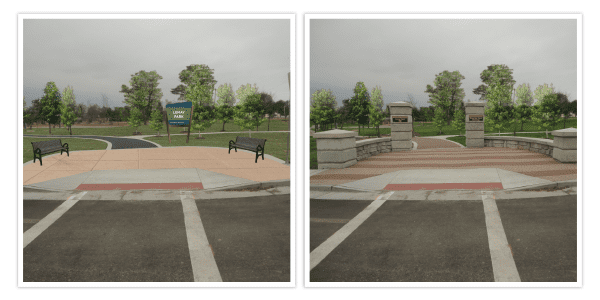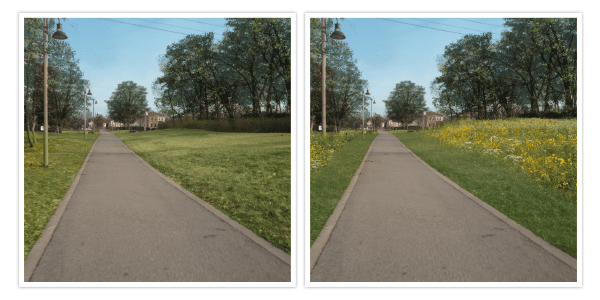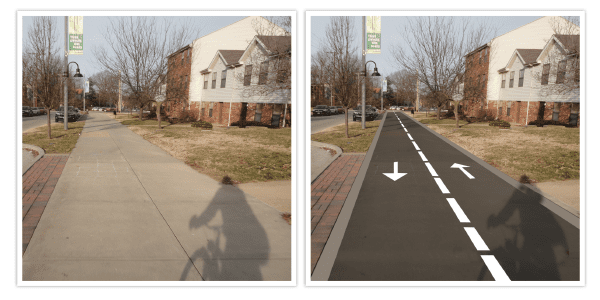When developing a greenway segment, it is important to have big picture design ideas in mind. Outside of overarching standards for safety and security, the following three elements represent the design focus outlined in the guidelines.
 CELEBRATE WHERE IT MAKES SENSE
CELEBRATE WHERE IT MAKES SENSE
Aesthetic finishes and elements beyond the base transportation components of the greenway should be used where they are appropriate. Otherwise, standard finishes should be used. It is important to consider maintenance and partner responsibility as well. This can even be applied to planting layouts, with more complex and intensive plantings placed in strategic and high visibility areas. The walls, columns, and pavements at the completed entrance to Lemay Park, on the right, is an appropriate use of additional elements and celebrates the entry to a significant regional park. The treatment in the visualization on the left would be more appropriate at a less significant point in the greenway.
PUT THE GREEN IN GREENWAY
Long-term sustainability of the greenway system is established through a design process that incorporates long-term thinking. Greenway designs should be viewed through the lens of environmental stewardship and the need for human inputs. Maintenance should be at the forefront of design decisions, and it should be an integral part of discussions with municipal partners. Simple decisions like replacing turf with a native meadow can have huge impacts when applied to the whole system. The visualization on the right shows an ‘enhanced’ greenway corridor with native plantings in lieu of turf.
DESIGN FOR LEGIBILITY
Greenways should be legible, giving users a keen understanding of the interconnectedness of the system. While wayfinding signage is critical, design decisions about greenway paving materials is also critical to the creation of a unified and legible network. Furthermore, materials selections are critical to limiting potentially dangerous conflict zones along the trail. A pavement treatment like the image on the right clearly signals to adjacent residents the ‘throughway’ of cyclists on the trail, while the concrete on the left could easily be mistaken for a wide sidewalk.


